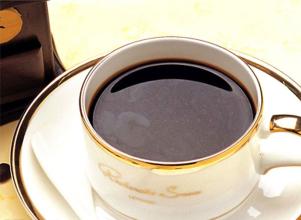Costa Rica Black Honey treatment Water content Coffee Bean Flavor description Grinding scale Variety treatment
Costa Rican black honey treatment of water content coffee bean flavor description grinding scale variety treatment method
Costa Rican coffee has always been regarded as a perfect type of classic flavor, balanced, clean and mild is his tone. San Juan Youzhuang, a processing plant in the western valley, comes from a famous orange county (Naranjo), and is famous for its excellent natural geographical conditions and excellent regional planting and management techniques. it has almost perfect classical flavor and lively citrus flavor in acidity. BlackBerry fruit aroma, acidity and taste thick, melon sweet taste smooth, drupe / micro-flower aroma, while the finish has a significant coffee flower aroma, is a taste of coffee full of Latin country style. Its flavor features brown sugar, floral aroma, almonds, black tea, oranges and sweet spices, mild acidity, syrup taste and a good finish.
The natural treatment process of French Sika is quite laborious. The artificially picked high-sugar coffee fruit is first placed in an African viaduct in the sun for about 10 days, and then placed in a plastic-covered greenhouse to create more direct heat and continue to dry. until the water content reaches 11.5%. The slow drying process allows raw beans to develop more natural sweetness from the inside, but it also needs to be taken care of more carefully and constantly turned. In the end, the red cherries turn black, giving off the aroma of fruitcake, black sugar and even sherry. This is the "Perla Negra"!
There are eight Costa Rican producing areas, of which Tarazu, the Central Valley and the Western Valley are recognized as the three best producing areas. Las Lajas is located in the foothills of Sabanilla de Alajuela and Poas Volcano in the Central Valley. Strictly speaking, "Lajas" is actually the name of the Chakon family processing plant. The name of the manor is Finca La Mirella, but bean bakers around the world are also accustomed to calling it Finca las lajas Lajas. It is also the first manor in Central America to start honey treatment and natural sun treatment. Tanning is a very traditional practice, which uses the least resources, but because there are too many uncontrollable factors, it is very difficult to do well. Francesca has added many innovations, such as using the sugar meter (Brix meter), which is often equipped in the wine industry, to measure the sugar content of the fruit, and to determine the best time and treatment of harvest according to the sugar content of Brix. Only those with more than 20% sweetness will be exposed to the sun. The Brix value of general fruit is 14 for apple, 12 for lemon and 18 for passion fruit, but the coffee cherry in Lajas can reach 21 / 22%.
In the treatment of raw coffee beans, Costa Rica's Meil treatment (also known as honey treatment) has its own characteristics. Lao Li also recently got the beans treated with Costa Rican red honey to supplement the unique method of Costa Rican Meil processing.
The treatment of honey:
After removing the peel and pulp, the coffee beans with pectin are dried. The key to distinguishing between different honey treatments lies in the remaining pectin: the proportion of retained pectin, drying time and drying method.
The characteristics of honey treatment:
When picking, test the sugar content first and pick only coffee fruits with a sugar content of 210.22%. Honey treatment is different from other processing methods and should be dried on AFRICAN BED (tanning bed). If it dries directly on the cement or on the land, it is easy to scratch the coffee beans when turned, resulting in bacterial damage. Direct soil exposure can also give coffee beans an earthy taste.
The taste difference between honey treatment and washing treatment:
Higher sweetness, higher sugar content and higher alcohol thickness than washing (under the premise of the same baking degree)
Honey-treated beans need to be well ventilated when they are dry, otherwise the retained pectin mucosa is easy to ferment or mildew and cause bad smell.

Important Notice :
前街咖啡 FrontStreet Coffee has moved to new addredd:
FrontStreet Coffee Address: 315,Donghua East Road,GuangZhou
Tel:020 38364473
- Prev

Introduction to the characteristics of Coffee Bean Fire Fenghuang Manor in Costa Rica
The Coffee Bean Fire Phoenix Manor in Costa Rica; the coffee industry in Costa Rica, originally controlled by the Costa Rican Coffee Industry Company (InstitutodelCafdeCostaRica, ICAFE), has been taken over by the official Coffee Committee (OficinadelCaf). Among the coffee exported, those are considered to be of substandard quality
- Next

Flavor description of Costa Rican Tarazhu Coffee beans introduction to the Origin of the varieties of Grinding scale
Costa Rican Tarazhu coffee beans flavor description grinding scale variety origin Tarazhu coffee raw bean color is blue-green, with the characteristics of extremely hard beans, round beans, small particles, slightly poor evenness, using full water washing treatment, the variety is Kaddura of Costa Rica, in order to highlight its refreshing and clean taste, we use light to medium baking. Test the cup for baked coffee
Related
- Detailed explanation of Jadeite planting Land in Panamanian Jadeite Manor introduction to the grading system of Jadeite competitive bidding, Red bid, Green bid and Rose Summer
- Story of Coffee planting in Brenka region of Costa Rica Stonehenge Manor anaerobic heavy honey treatment of flavor mouth
- What's on the barrel of Blue Mountain Coffee beans?
- Can American coffee also pull flowers? How to use hot American style to pull out a good-looking pattern?
- Can you make a cold extract with coffee beans? What is the right proportion for cold-extracted coffee formula?
- Indonesian PWN Gold Mandrine Coffee Origin Features Flavor How to Chong? Mandolin coffee is American.
- A brief introduction to the flavor characteristics of Brazilian yellow bourbon coffee beans
- What is the effect of different water quality on the flavor of cold-extracted coffee? What kind of water is best for brewing coffee?
- Why do you think of Rose Summer whenever you mention Panamanian coffee?
- Introduction to the characteristics of authentic blue mountain coffee bean producing areas? What is the CIB Coffee Authority in Jamaica?

